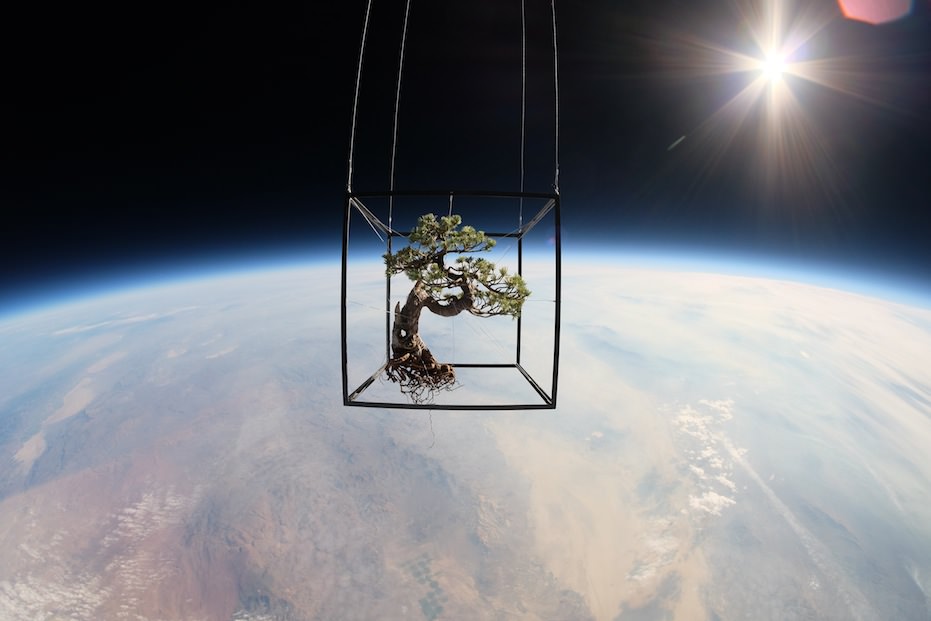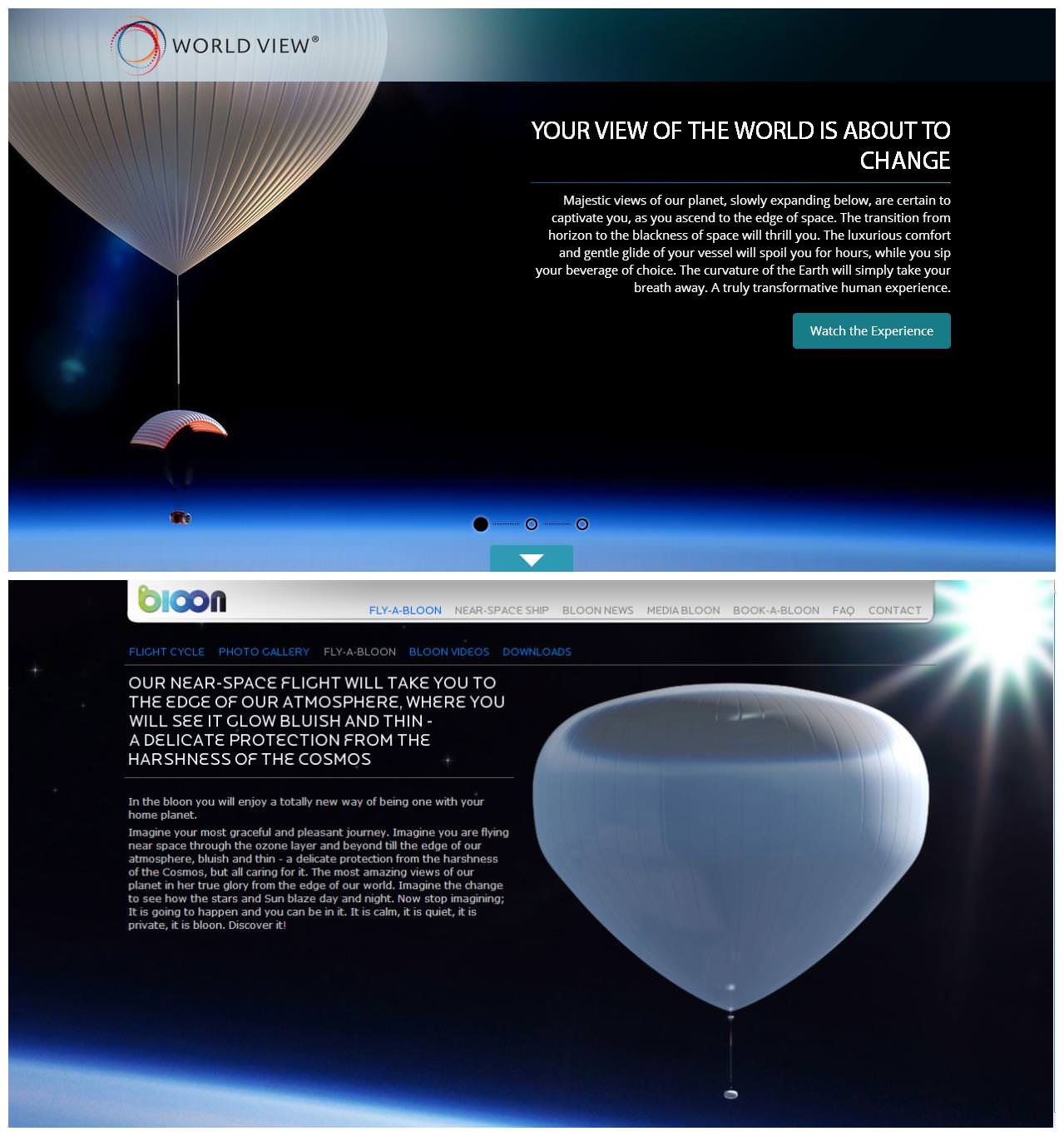The newly announced World View balloon flight concept shares a number of “striking” similarities to an older proposal for ‘near-space flight experience’ balloon rides, according to the head of the zero2infinity Inbloon project.
Both concepts are competing in the nascent high-altitude balloon market, which would see these craft fly high in the stratosphere with paying clients and/or payloads on board. Some of them would be paying tourists to look at the view, while others would be institutions looking to get above most of the Earth’s atmosphere for scientific and other purposes.
The groundwork for zero2infinity’s Inbloon has been in the works since about 2002, founder Jose Mariano Lopez Urdiales said. So far, the Spanish company has run three test flights with micro versions of its balloon; the last one was in September. A ride high in the atmosphere would (when it happens) cost the equivalent of $150,000 (110,000 Euros).
World View — backed by Arizona’s Paragon Space Development Corp., which is involved in several startup space projects — announced in late October that it would offer rides to the high atmosphere for $75,000 each. Few details were provided, but Paragon president Jane Poynter told Universe Today that more announcements will come. She added that the company has been thinking about this kind of work seriously for at least a decade.
The companies were in talks for Paragon to provide life support systems for Inbloon, Urdiales said, but Paragon decided to go its own route. The World View announcement came shortly after Urdiales was told of Paragon’s decision, he added.
“We were speaking to them for a couple of years. They learned about our business and what we were doing,” Urdiales said in late October.
“A month ago or so, they said ‘We’re not going to be able to supply you. We don’t think we’re going to be able to export this to Spain.’ And then we said, ‘Fine, we’re talking to other suppliers’ … and then they launched this thing. The commonalities are striking.”
As examples, Urdiales said a lot of the marketing language was similar and that the artists’ concepts of the balloon designs for the two companies also appeared to be about the same. He added, however, that he is not planning to pursue any formal action because he would rather focus on running safe flights. The first human-rated Inbloon flight is expected in 2014, he said.
“The hard part is getting the investment, and doing the flight. Both things are pretty hard, and require a level of integrity. Otherwise the tests don’t work and you break something and you [could] kill people.”
World View told Universe Today that Paragon has been pursuing this idea independently for years, long before they heard of Urdiales’ plans. The company did not comment on Urdiales’ claims about previous business talks.
World View Experience.mp4 from World View on Vimeo.
“Let me start by emphasizing that we are not duplicating anyone’s plans. The World View concept has been an interest of ours for many years,” Paragon’s Poynter told Universe Today in an e-mail.
“It is worth mentioning, I think, that the idea of human flight using high altitude balloons is not a recent development. In fact, the origins of this idea date back to the 1950s with the work of Otto Winzen and others. As for our own origins, [co-founder] Taber [MacCallum] went to high-altitude balloon launches as a child, as his father is an astrophysicist and was studying gamma-ray astronomy using high-altitude balloon launches of telescopes.
“That experience translated,” she added, “later in life, to Paragon’s work on a commercial airship project a decade ago for tourism and cargo. We began developing World View long before we heard about Jose and his initiative. In fact, we’ve been looking at commercial uses of lighter-than-air craft for a long time.”
The URL for World View, worldviewexperience.com, was registered Aug. 24, 2013, according to public domain records. Inbloon’s URL, inbloon.com, was registered May 6, 2009.


